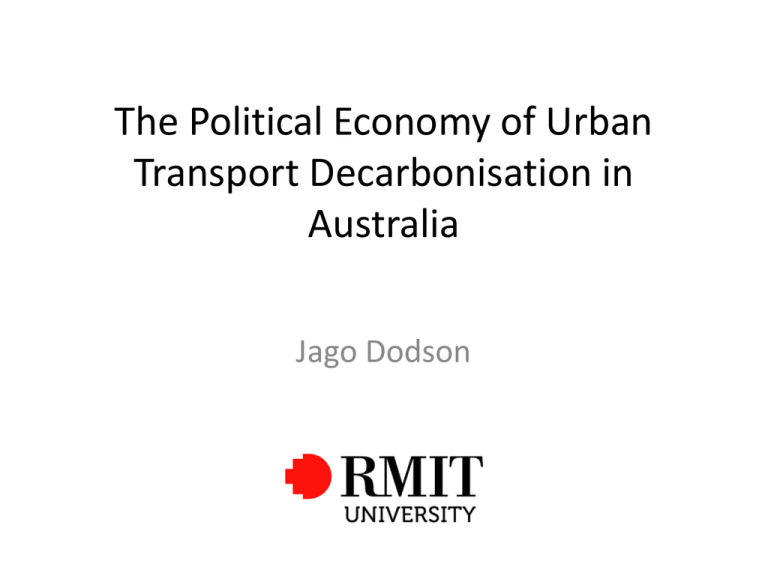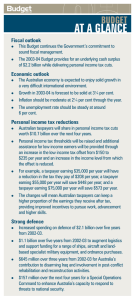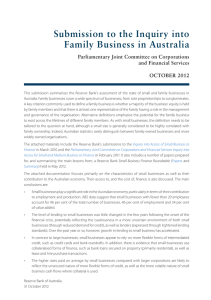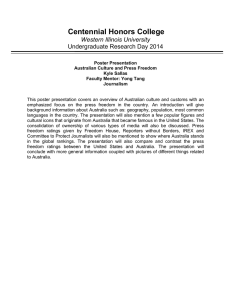The Political Economy of Urban Transport Decarbonisation in Australia Jago Dodson
advertisement

The Political Economy of Urban Transport Decarbonisation in Australia Jago Dodson Outline of Presentation • • • • • Background to the decarbonisation question The Australian urban transport context Australian climate policy Current decarbonisation efforts Future prospects Carbon Transport Context Unger et al (2010) Australian Transport Context Newman and Kenworthy 1999 Selected Australian Transport Statistics City Sydney Population* (2013, million) Work trips (Census day)§ (2013) Mode share all trips by private motor vehicle (per cent) 4.76 Melbourne 4.35 Brisbane Perth Adelaide 2.24 1.97 1.29 1,772,780 1,642,078 1,642,078 722,761 484,728 70.0∞ 75.4^ 79.0 n/a 81.8≈ 86.0 89.0 91.8 92.5 94.1 14.0 11.0 8.3 7.5 5.9 1,200,502 1,249,345 649,144 573,528 399,489 67.7 76.1 76.0 79.4 82.4 Proportion of motorised travel task, private passenger vehicles#, (vehicle kilometres travelled, per cent)+# Proportion of motorised travel task, public transport, (vehicle kilometres travelled, per cent) Journey to Work by car (total trips)§ Journey to Work by car trips (mode share, per cent) § Greenhouse Emissions in Australia DOE 2014 Emissions and Transport in Australia • Transport produces 17 per cent of Australia’s total greenhouse gas emissions • Private cars produce 47 per cent of Australia’s transport greenhouse emissions • Private cars thus produce 8 per cent of Australia’s total greenhouse emissions Urban Structure and Transport • Australia is a ‘suburban nation’ • Around 54 per cent of the Australian population lives in the middle or outer suburbs of Australia’s major cities. Urban Structure and Transport Automotive emissions Total emissions Lenzen et al 2004 ‘VIPER’ - Sydney High vulnerability in: •Low socio-economic status area •Western/outer areas •Areas with poor PT Low vulnerability in: •Inner areas •Higher SE status areas •Better PT services ‘VIPER’ - Melbourne High vulnerability in: •Low socio-economic status areas •Outer areas •Areas with poor PT Low vulnerability in: •Inner areas •Higher SE status areas •Better PT services Australian Climate Change Policy - National context Australia’s Climate Target • 5 per cent reduction from 2000 levels by 2020 Australian Climate Policy • 1980s - early 1990s: – Initial concern and interest in climate change – ‘Naïve altruism’ • mid-late 1990s – ‘rationalist economics’ – ‘fossil fuel pragmatism’ • Early-2000s – Reluctant recognition Australian Climate Policy • 2007-2013 – Cautious global participation – Signing of Kyoto – Clean energy future policy • 2012 – Carbon pricing scheme introduced – Renewable energy targets • 2014-2015 – Abolition of carbon pricing – ‘Direct action’ – Reduction of renewable energy targets Transport policy • Federal policy – Since 2013 Federal government to fund roads only – Fuel excise indexation – No federal energy efficiency standards for transport • State Policy – Demand driven transport investment – ‘Balanced’ policy – no modal preference Australian Fuel Tax DIS 2015 Australian vehicle fleet efficiency NTC 2014 Fuel economy • 1963 – 11.4 L/100km • 1990 - 12.3 L/100km • 2011 – 11.1 L/100km Possible Vehicle Emissions Scheme CCA 2015 Demand driven change? Conclusions • Australia one of world’s worst carbon emitters • Australia a carbon policy recalcitrant • Transport not seriously part of climate policy • Questions of risk and vulnerability?




